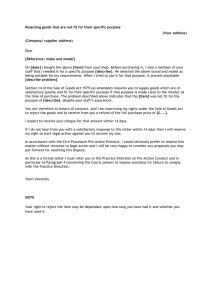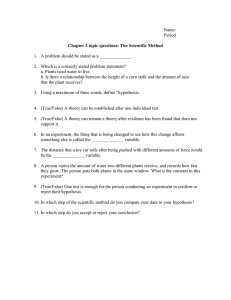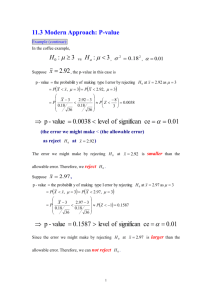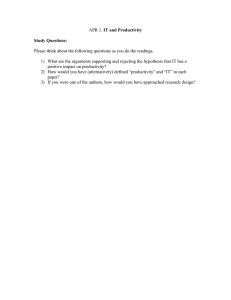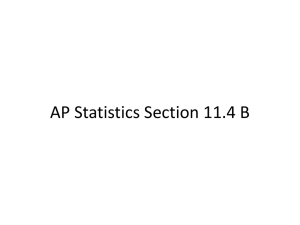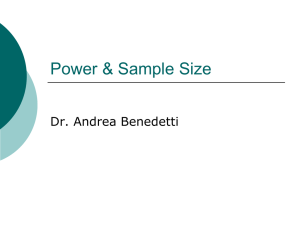Extended Exercise on Sample Size and Power
advertisement
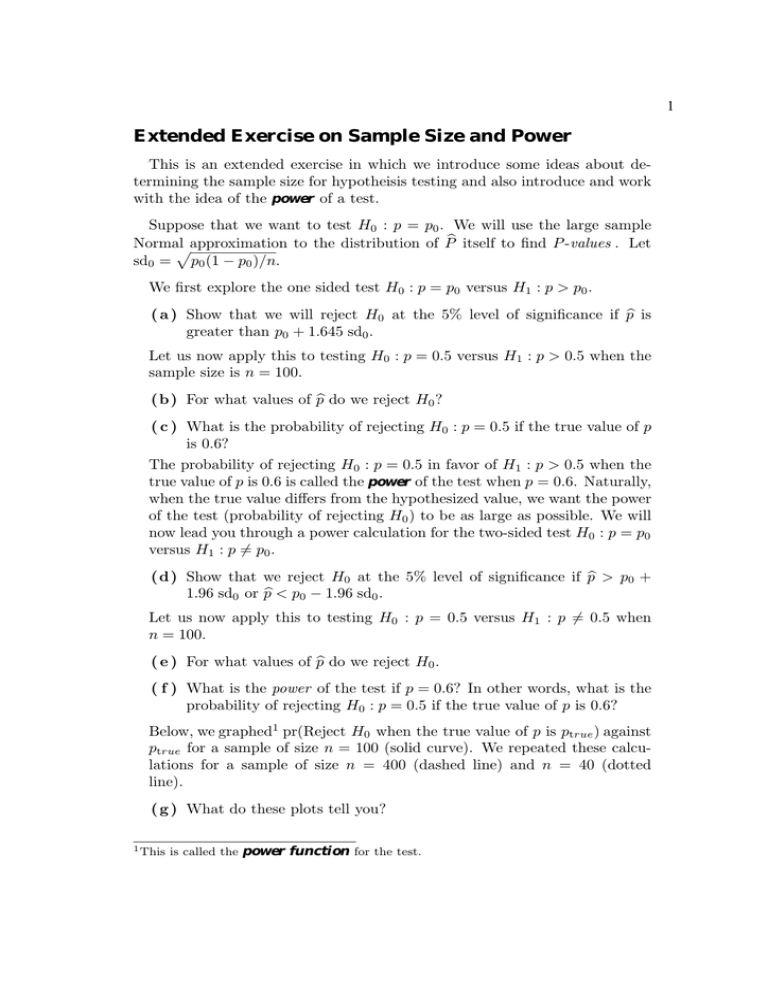
1 Extended Exercise on Sample Size and Power This is an extended exercise in which we introduce some ideas about determining the sample size for hypotheisis testing and also introduce and work with the idea of the power of a test. Suppose that we want to test H0 : p = p0 . We will use the large sample b Normal papproximation to the distribution of P itself to find P -values . Let sd0 = p0 (1 − p0 )/n. We first explore the one sided test H0 : p = p0 versus H1 : p > p0 . ( a ) Show that we will reject H0 at the 5% level of significance if pb is greater than p0 + 1.645 sd0 . Let us now apply this to testing H0 : p = 0.5 versus H1 : p > 0.5 when the sample size is n = 100. (b) For what values of pb do we reject H0 ? ( c ) What is the probability of rejecting H0 : p = 0.5 if the true value of p is 0.6? The probability of rejecting H0 : p = 0.5 in favor of H1 : p > 0.5 when the true value of p is 0.6 is called the power of the test when p = 0.6. Naturally, when the true value differs from the hypothesized value, we want the power of the test (probability of rejecting H0 ) to be as large as possible. We will now lead you through a power calculation for the two-sided test H0 : p = p0 versus H1 : p 6= p0 . (d) Show that we reject H0 at the 5% level of significance if pb > p0 + 1.96 sd0 or pb < p0 − 1.96 sd0 . Let us now apply this to testing H0 : p = 0.5 versus H1 : p 6= 0.5 when n = 100. ( e ) For what values of pb do we reject H0 . ( f ) What is the power of the test if p = 0.6? In other words, what is the probability of rejecting H0 : p = 0.5 if the true value of p is 0.6? Below, we graphed1 pr(Reject H0 when the true value of p is ptrue ) against ptrue for a sample of size n = 100 (solid curve). We repeated these calculations for a sample of size n = 400 (dashed line) and n = 40 (dotted line). ( g ) What do these plots tell you? 1 This is called the power function for the test. 2 pr(Reject H 0: p = 0.5) when the true value of p is p true n = 400 pr(Reject H 0) 1.0 0.8 n = 100 0.6 n = 40 0.4 0.2 0.05 0.0 0.0 0.1 0.2 0.3 0.4 0.5 0.6 0.7 0.8 0.9 1.0 p true Finally, we will lead you through a sample size calculation. Let sdT = p pT (1 − pT )/n. (h) Show that a one-sided test of H0 : p = p0 versus H1 : p > p0 performed at the 5% level of significance has power 80% (i.e. the probability of rejecting H0 is 0.8) if the true value of p is pT = p0 + 1.645 sd0 + 0.8416 sdT . ( i ) Suppose that p0 = 0.5 and the true value of p is pT = 0.6. Using the equation in (h), find n so that a 5% significance level test has an 80% chance of rejecting H0 .

